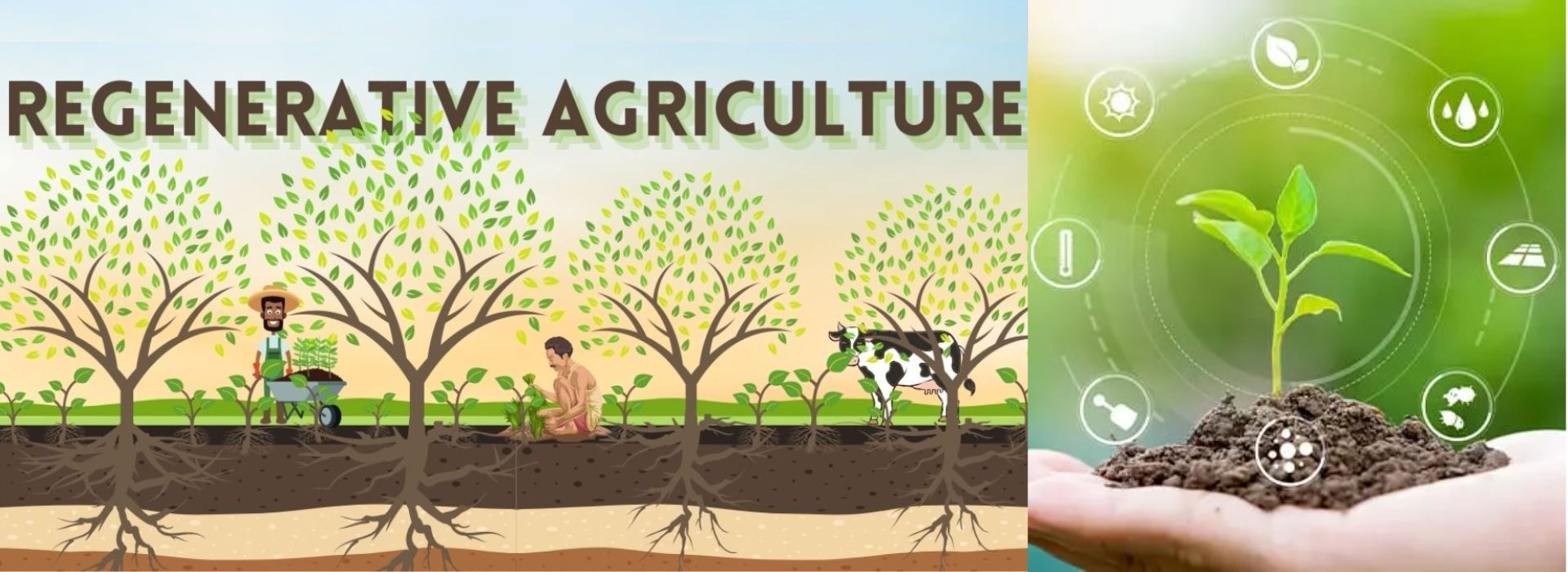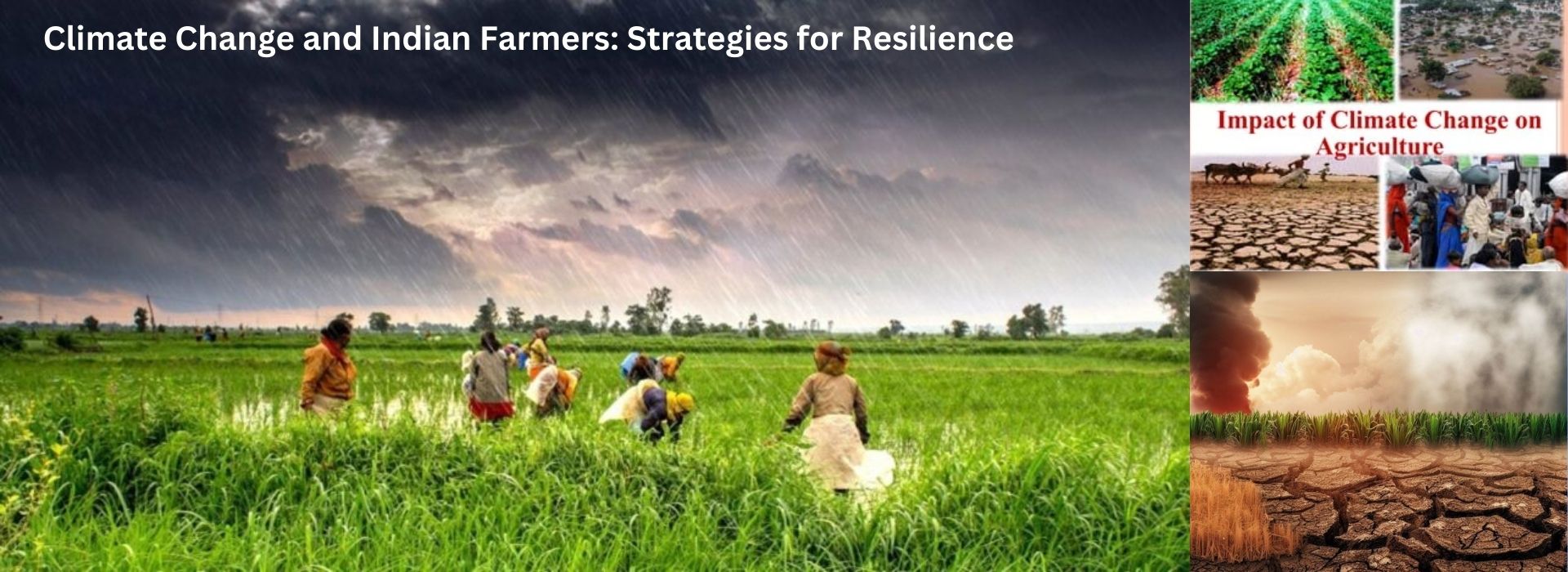Regenerative Agriculture: Restoring Balance and Building Resilient Farms
November 18, 2024Regenerative
Agriculture: Restoring Balance and Building Resilient Farms
Modern
farming faces immense challenges, including soil degradation, biodiversity
loss, and the unpredictable effects of climate change. Amid these challenges, regenerative
agriculture is emerging as a transformative solution. This innovative
farming approach focuses on restoring and enhancing natural ecosystems,
improving soil health, and creating resilient agricultural systems that benefit
both farmers and the environment.
This
blog explores the principles of regenerative agriculture, its practical
benefits, and why it is a crucial step toward sustainable and resilient farming
practices.
A.
What Is Regenerative Agriculture?
Regenerative
agriculture goes beyond sustainability; it actively improves the land. Unlike
conventional methods that often deplete resources, regenerative practices
restore soil health, increase biodiversity, and enhance water cycles.
Key
principles of regenerative agriculture include:
- Building
soil organic matter: Using
practices like cover cropping, composting, and reduced tillage to boost
soil fertility.
- Diverse crop
rotations: Promoting
biodiversity by growing different types of crops.
- Agroforestry
and silvopasture:
Integrating trees and shrubs into farming systems.
- Minimal soil
disturbance: Reducing
tilling to preserve soil structure and microbial life.
- Animal
integration: Using
livestock to naturally fertilize and aerate the soil.
B.
Why Soil Health Is at the Heart of Regeneration
Healthy
soil is the cornerstone of productive farming. Regenerative practices aim to
increase soil organic matter, leading to better water retention, improved
nutrient availability, and reduced erosion.
- Carbon
Sequestration: Healthy
soils store more carbon, mitigating climate change effects.
- Water
Management: Improved
soil structure enhances water infiltration, reducing runoff and protecting
against droughts.
- Biodiversity
Boost: Regenerative
practices encourage beneficial microorganisms, insects, and wildlife,
fostering a balanced ecosystem.
C.
Practical Benefits for Farmers
Adopting
regenerative agriculture provides tangible benefits for farmers, including:
- Higher
Yields: Over time,
improved soil fertility leads to more productive crops.
- Lower Input
Costs: Reduced
reliance on synthetic fertilizers and pesticides saves money.
- Resilience
to Climate Change:
Enhanced soil and biodiversity improve a farm's ability to withstand
extreme weather conditions.
- Market
Opportunities: Consumers
increasingly value sustainably produced food, opening doors to premium
markets.
D.
Examples of Regenerative Practices in Action
1.
Cover Cropping
Planting
cover crops like clover or rye during off-seasons prevents soil erosion,
improves fertility, and suppresses weeds.
2.
No-Till Farming
By
minimizing soil disturbance, no-till farming preserves soil structure and
microbial activity, enhancing long-term soil health.
3.
Compost and Organic Amendments
Adding
compost enriches soil with nutrients and organic matter, boosting crop
productivity naturally.
4.
Livestock Integration
Rotational
grazing systems mimic natural ecosystems, spreading nutrients evenly and
reducing the need for chemical fertilizers.
E.
Environmental and Social Impacts
Regenerative
agriculture not only restores ecosystems but also offers broader environmental
and societal benefits:
- Climate
Change Mitigation:
Practices like carbon sequestration in soil and reduced fossil fuel use
contribute to lowering greenhouse gas emissions.
- Improved
Water Quality: Less
chemical runoff protects rivers and lakes.
- Food
Security: Healthy
soils produce more nutritious and abundant food.
- Community
Empowerment:
Regenerative farming fosters local food systems, supporting rural
economies and strengthening community ties.
F.
Challenges and Opportunities in Scaling Regenerative Agriculture
While
regenerative agriculture holds great promise, scaling it presents challenges:
- Knowledge
Gaps: Farmers may need training to
implement regenerative practices effectively.
- Initial
Costs:
Transitioning from conventional farming to regenerative systems requires
upfront investments.
- Policy
Support: Governments
must provide incentives, subsidies, and infrastructure to encourage
widespread adoption.
However,
these challenges are surmountable with increased awareness, technology
integration, and collaborative efforts among farmers, researchers, and
policymakers.
Conclusion
Regenerative
agriculture is more than a farming method—it’s a movement that restores balance
between humanity and nature. By improving soil health, enhancing biodiversity,
and fostering resilience, it offers a path to sustainable and profitable
farming.
Farmers
who adopt regenerative practices not only future-proof their operations but
also play a vital role in combating climate change and securing food systems
for generations to come. As consumers and policymakers rally behind this cause,
regenerative agriculture is poised to become the foundation of a resilient
agricultural future.
At krishibazaar.in,
you can find and buy various agricultural products. For agricultural guidance
on selecting the most suitable products for your crops, please contact or
WhatsApp at +917887880887






Guest reviews
No reviews found for this Blog